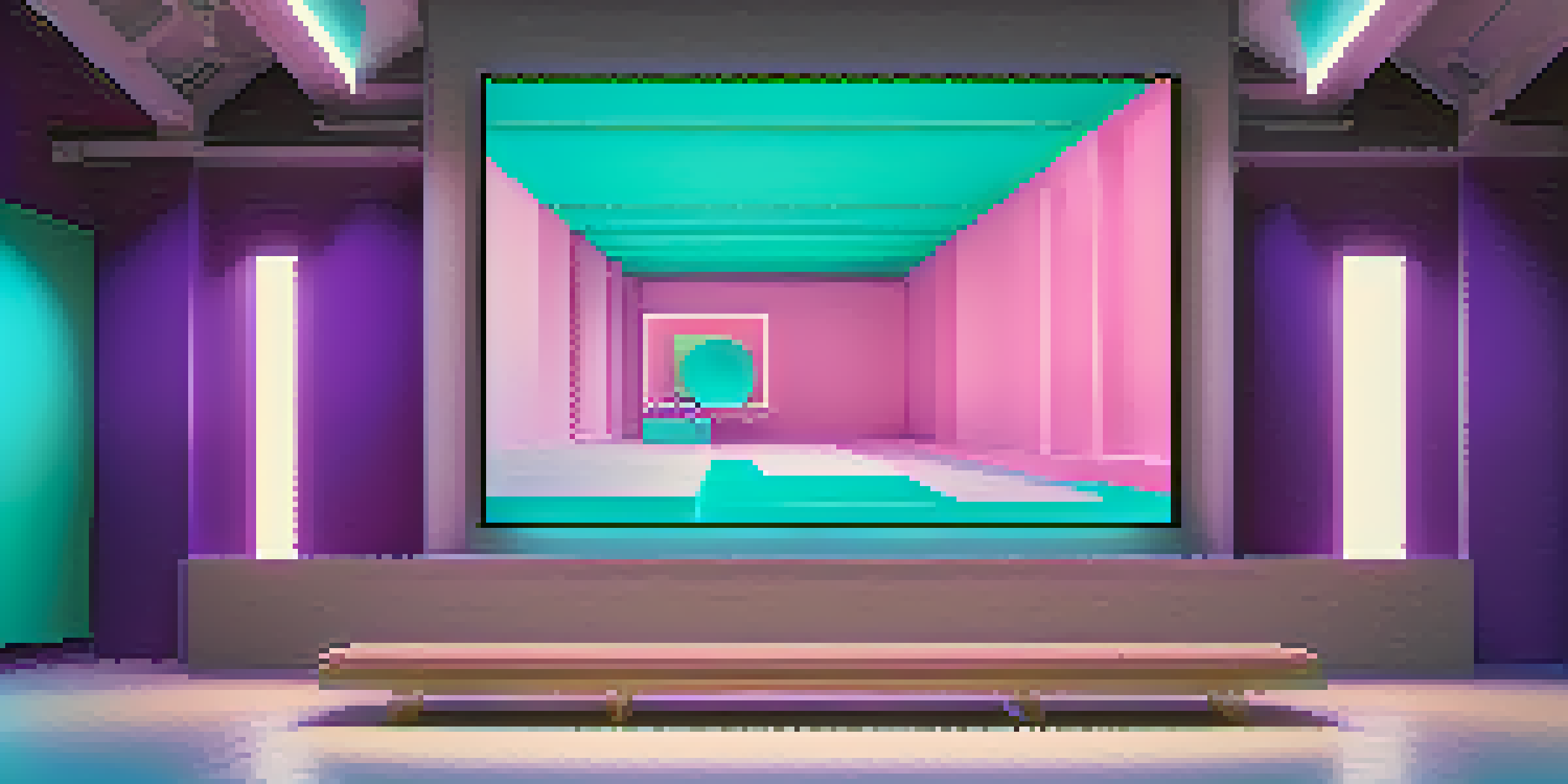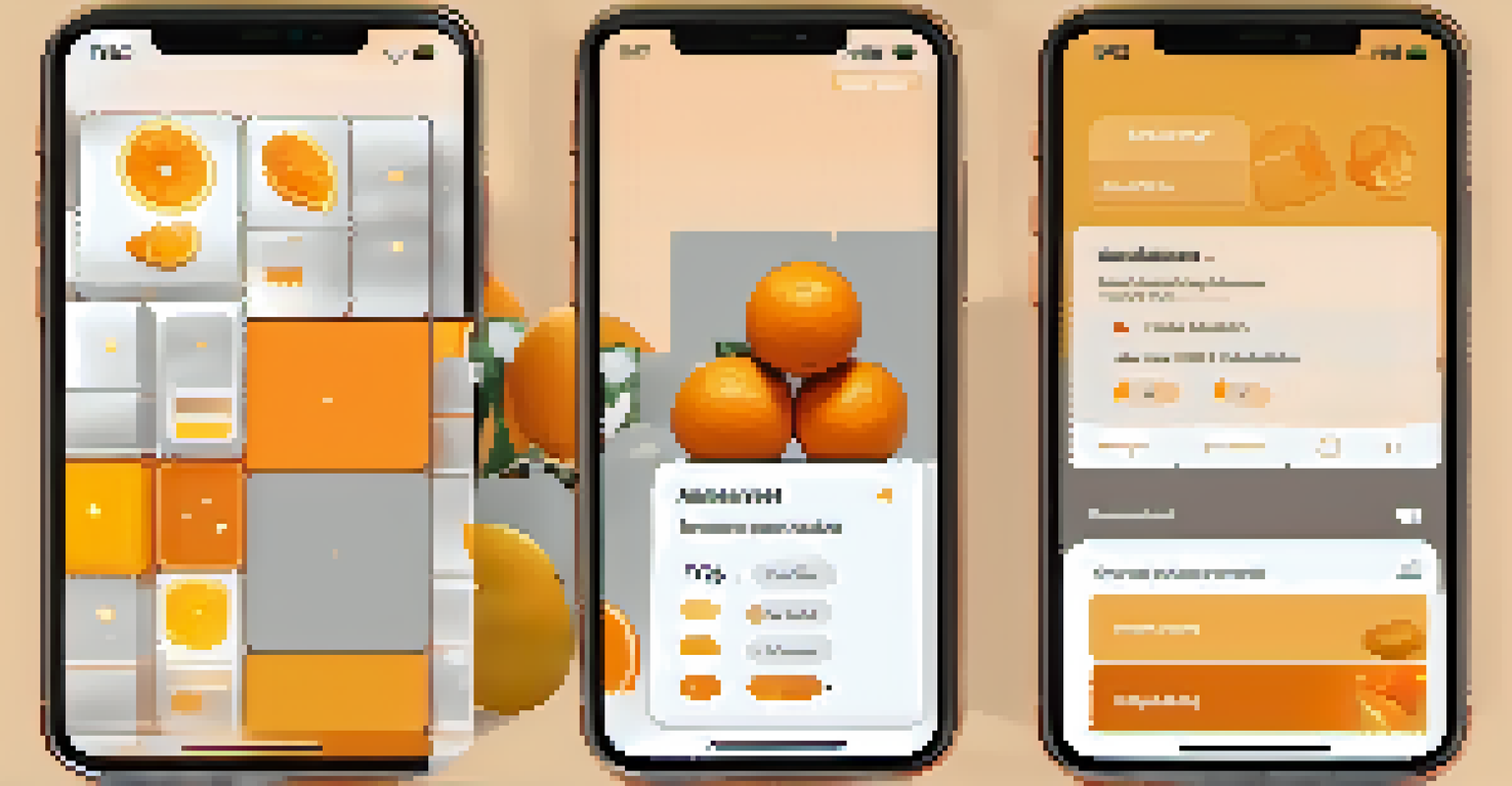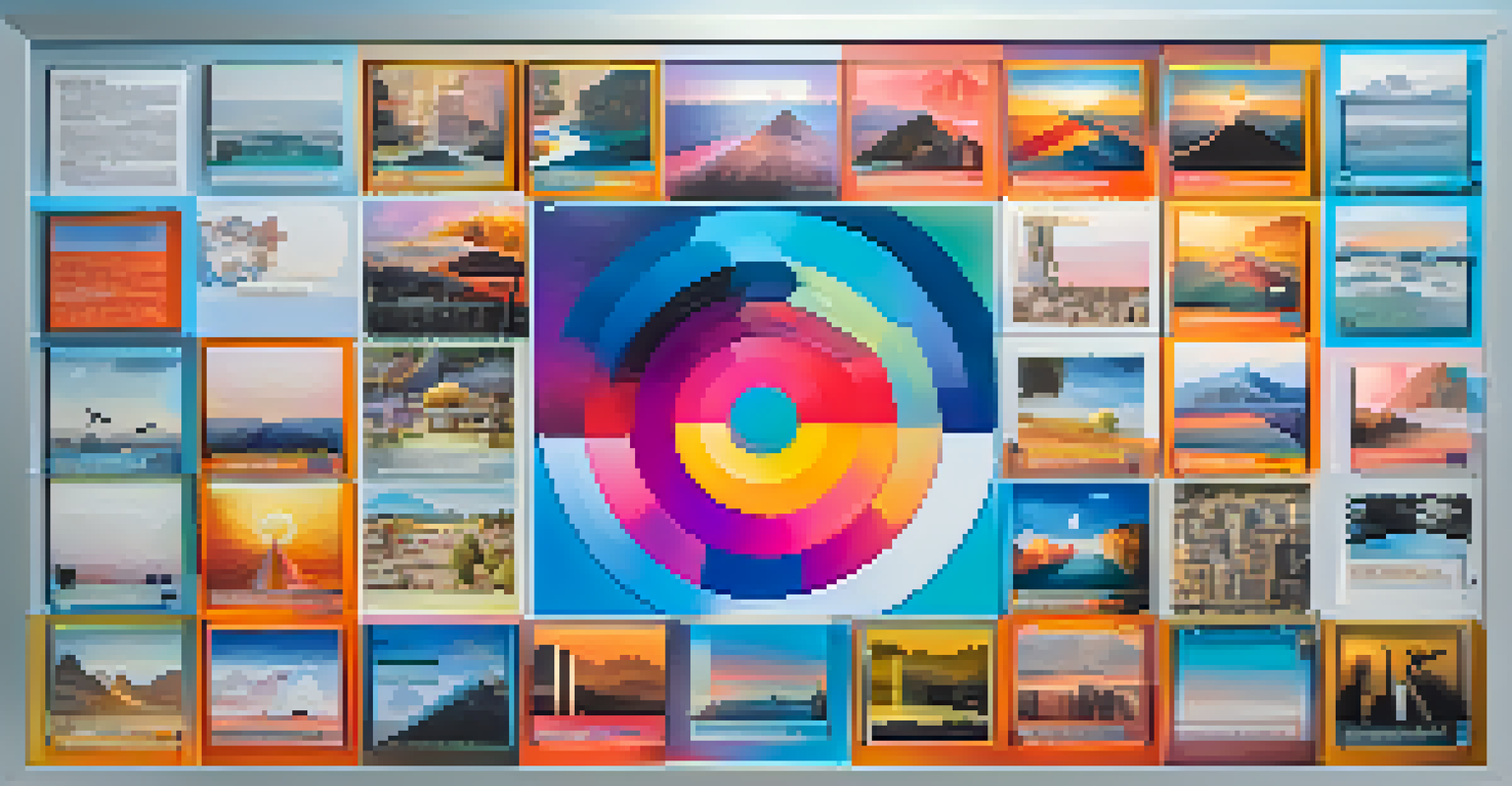Visual Design Trends for User-Friendly NFT Platforms

The Rise of Minimalism in NFT Platform Design
Minimalism has become a standout trend in visual design, especially for NFT platforms. By stripping away unnecessary elements, platforms can focus on showcasing digital assets more effectively. This approach not only enhances visual appeal but also improves user navigation, making it easier for collectors to find what they're looking for.
Simplicity is the ultimate sophistication.
For instance, a clean layout with ample white space allows users to concentrate on the artwork without distractions. This simplicity fosters a more enjoyable browsing experience, encouraging users to engage with the platform for longer periods. As the NFT market becomes crowded, minimalistic designs can help platforms stand out by emphasizing their unique offerings.
Moreover, minimalism aligns well with the values of many in the digital art community, emphasizing authenticity and clarity. By adopting this trend, NFT platforms can create environments that resonate with users’ desire for straightforwardness and ease of use.
Bold Typography: Making a Statement
Bold typography is another compelling trend that's making waves in NFT platform design. Using striking fonts can instantly grab attention and convey the platform's personality. When paired with a minimalist layout, bold typography serves as a focal point that enhances the overall user experience.

For example, platforms can use large, eye-catching headlines to highlight featured collections or new artists. This not only directs users' gaze but also builds excitement around the artwork being showcased. Clear, readable fonts are essential, especially when dealing with varying device sizes, ensuring that every user has the same experience.
Embrace Minimalism for Clarity
Minimalist design enhances user navigation and focuses on showcasing digital assets effectively.
Additionally, typography can play a crucial role in branding. By choosing unique fonts that reflect the platform's ethos, designers can create a memorable identity that distinguishes them from competitors. This strategic use of typography enhances both usability and brand recognition.
Color Schemes: Setting the Mood
Color schemes are vital in establishing the mood and tone of NFT platforms. Trendy palettes often feature vibrant colors that express creativity and innovation, reflecting the dynamic nature of the NFT market. A well-chosen color scheme can evoke emotions, guide user actions, and enhance overall aesthetics.
Design is not just what it looks like and feels like. Design is how it works.
For instance, using a combination of bright hues can inspire excitement and curiosity, while softer tones may create a more calming experience. When designing an NFT platform, it's essential to consider the psychological impact of colors on users. This approach can help in crafting a more engaging environment that resonates with the target audience.
Moreover, consistency in color usage across the platform reinforces brand identity and improves usability. When users become familiar with a specific color scheme, navigating the platform feels more intuitive, enhancing their overall experience.
Interactive Elements: Engaging Users
Integrating interactive elements into NFT platforms is a trend that can significantly boost user engagement. Features like hover effects, animations, and dynamic content create a more immersive experience, making users feel like active participants rather than passive viewers. This interactivity can encourage deeper exploration of the platform.
For example, allowing users to preview NFT details through hover effects can quickly provide valuable information without cluttering the interface. Such design choices not only enhance usability but also encourage users to interact with the digital assets more intimately. This leads to a more satisfying and memorable browsing experience.
Bold Typography Captures Attention
Striking fonts paired with minimalist layouts create focal points that enhance user experience and branding.
Furthermore, interactive features can foster community engagement by enabling users to comment, share, or even collaborate on projects. This sense of involvement can create a loyal user base, as people are more likely to return to platforms where they feel a connection.
Responsive Design: Ensuring Accessibility
With the rise of mobile usage, responsive design has become essential for NFT platforms. A responsive layout adapts seamlessly to different screen sizes, ensuring a consistent user experience whether on desktop or mobile. This flexibility is crucial in catering to a diverse audience.
For instance, a user browsing an NFT platform on their smartphone should have the same ease of navigation and access to features as they would on a larger screen. This adaptability not only improves usability but also increases the chances of user retention, as people appreciate platforms that work well on their preferred devices.
Moreover, responsive design is vital for accessibility. By ensuring that all users, regardless of their device, can interact with the platform effectively, designers contribute to an inclusive digital environment. This commitment to accessibility can enhance a platform's reputation and broaden its user base.
Visual Hierarchy: Guiding User Attention
Creating a clear visual hierarchy is fundamental for guiding user attention on NFT platforms. By strategically using size, color, and placement, designers can direct users toward essential information and actions. This helps users navigate the platform intuitively, making their experience smoother and more enjoyable.
For example, larger images of featured NFTs can draw users' eyes, while smaller, less prominent elements can provide necessary details without overwhelming the viewer. A well-defined visual hierarchy ensures that users can quickly identify what matters most, enhancing their overall interaction with the platform.
Interactive Elements Boost Engagement
Integrating features like hover effects and animations encourages users to explore and interact more deeply with the platform.
Additionally, a thoughtful visual hierarchy can minimize user frustration by reducing the cognitive load. When users can effortlessly understand where to go next, they are more likely to engage with the platform and explore its offerings.
User-Centric Design: Prioritizing the Experience
User-centric design is at the heart of creating successful NFT platforms. This approach emphasizes understanding users' needs, preferences, and behaviors to develop features and interfaces that enhance their experience. By prioritizing the user, designers can create more intuitive and enjoyable platforms.
For instance, conducting user research and testing can reveal pain points and preferences that inform design decisions. This feedback loop allows designers to iterate and improve the platform based on real user experiences, fostering a sense of community and ownership among users.

Ultimately, a user-centric design approach not only increases satisfaction but also builds loyalty. When users feel heard and understood, they are more likely to return and even recommend the platform to others, contributing to its growth and success.